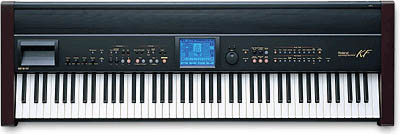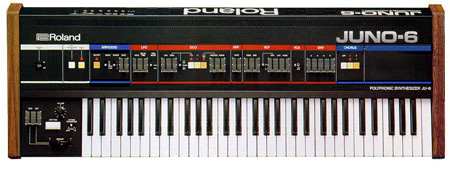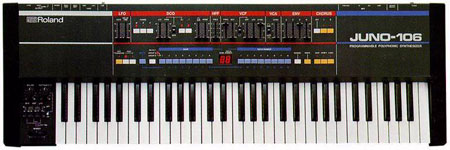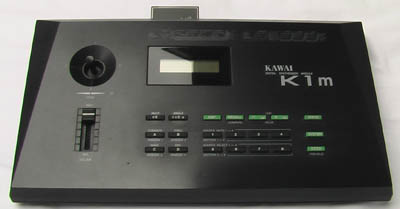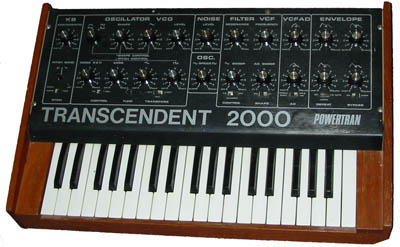Roland KF90 stage piano
Big expensive box of trickery with a nice weighted piano action keyboard. It must weigh getting on for the weight of a real piano. Sports a internal sequencer that a number of my pieces were composed upon – to appropriate a metaphor usually used in a different context, this was like wall-papering your hall through your letter box. The sounds are not really tweakable, but are very good, and there’s hundreds of them, including some very good organs (used on Old Faithful (2001)). If only it had a pitch bend and modulation wheel . . . Still, you can assign a foot pedal to pitch bend, as used to good effect on the guitar lead of Jolly Song.
Roland HP3500s Piano
Especially nice vibes. I traded it in to the same shop I bought it from 10 years previously (Emis Music) when I bought the KF90.
Roland Juno 6 polyphonic synthesiser
I owned this this synth for about 20 years and was very fond of it, but it didn’t have MIDI, which was a pain in the bum, so I reluctantly traded it in to buy the KF90. One of my favourite tricks was to push of the Q of the filter all the way up so it oscillated. The filter tone could then by set to track the DCO tone at some (in)appropriate offset. Polyphony was limited to 6 notes, so you have to be careful not to get too carried away. Or use lots of digital delay.
Roland Juno 106 polyphonic synthesiser
Similar to the Juno 6, but featuring more extensive DCO facilities, MIDI and presets.
Kawai K1m Digital Synthesiser Module
I bought this in a pub car park in 1990. I never could be arsed to learn to programme it, and relied heavily on a few favourite patches, like “Visitors”, used on Unwanted Visitors. Soar is also a good show-case for its abilities.
It’s a bit of a dust trap these days. I really should change the battery in the external RAM card at some point.
Powertran Transcendent 2000 monophonic synthesiser
Designed by Tim Orr. I had two of these at one point. The first one was built from a kit. The front panel was made from a piece of domestic electric storage heater. Building from a kit meant comparable facilities with the synths of the day (1978) at prices a schoolboy could (just) about afford.
They were rather prone to going flat at high frequencies. I avoided this problem by mostly using them for bass. Also the pitch bend control didn’t return to centre when you let it go.
The build plans etc. can be seen at Transcendent 2000 at port23.co.uk. Here’s a Sound on Sound article on the EMS synthesiser company.
Roland TR606 drum machine
Everybody had one of these at one point. Although relatively easy to programme, I never could be bothered to learn, hence the reason for the same pattern on Old Faithful 1983, Theme from Horizon and everything else I did with it.
See more on the TR606 at Drum Antix – the 606 page.
Roland DR550 “Dr. Rhythm”
Has “Dr. Rhythm’s” PhD thesis ever been sighted, I wonder?
CCD Phaser / Flanger
The design for this unit appeared in the UK electronics hobbyist magazine ETI (Electronics Today International). I built mine from the the “ETI top projects No. 7” compilation, published Summer 1979. It was credited to “David Vorhans”, a typo for David Vorhaus (his White Noise site – sadly now defunct, Sound on Sound profile).
Due to the use of an analogue CCD (Charge Coupled Device) delay line based on the TDA1022 IC, it didn’t suffer as badly from the signal-noise limitations of the Powertran Digital Delay. Another “feature” was the exposed mains wiring on the PCB. My mate Spike was nearly electrocuted to death by it. He had a scar on his finger for years afterwards. Here’s a scan of the original article. including the schematic.
Powertran Digital Delay
Designed by Tim Orr. Marvel at the limited signal to noise ratio due to the use of 8-bit data converters and the absence of companding. Still, built from a kit it was affordable, and the presence of the LFO and especially the freeze function provided for hours of “Max Headroom” style entertainment.
Rubbish drum machine
Another ETI project from the late seventies. Sounded like shit. Relatively easy to programme though. Thankfully I got rid of it years ago.
Even more rubbish drum machine
This was Pete Woodin’s. The best thing about it was its handsome wooden case. It sounded terrible. Pete used to reprogramme it by rearranging the internal diode matrix.
